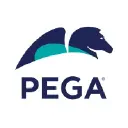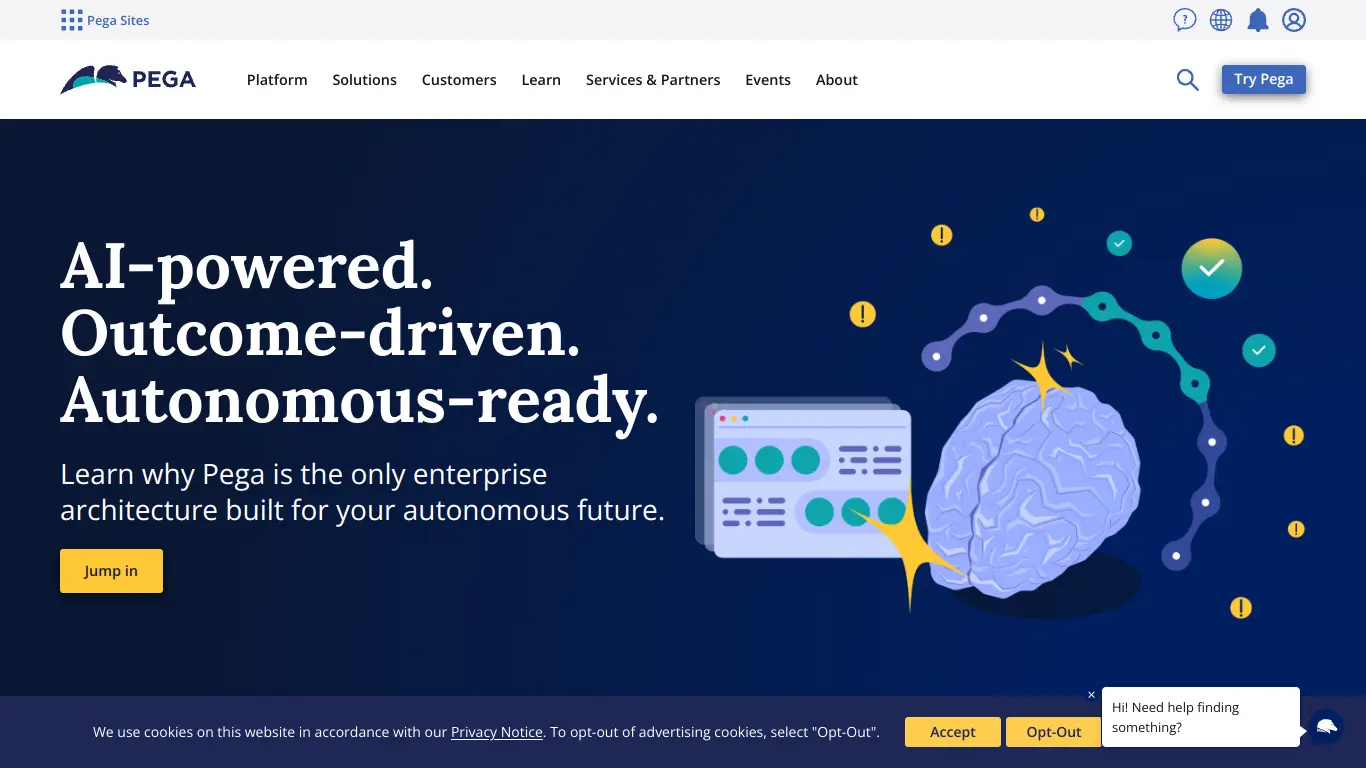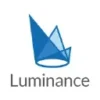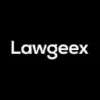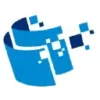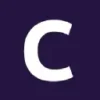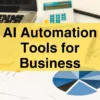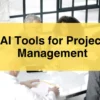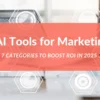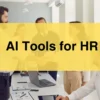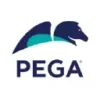Pegasystems offers powerful enterprise automation and CRM solutions with AI capabilities for large organizations seeking digital transformation.
Introduction to Pegasystems
Are you struggling with complex business processes that seem impossible to automate effectively? Or perhaps your organization is drowning in disconnected systems that don’t communicate with each other? Many businesses today face these challenges, leading to inefficiencies, poor customer experiences, and missed opportunities. If this sounds familiar, you might be searching for a comprehensive solution that can transform your operations through intelligent automation and AI-powered decision-making. This is where Pegasystems enters the picture.
What is Pegasystems and its Purpose?
Pegasystems (often simply called Pega) is a powerful enterprise software platform specializing in digital process automation (DPA), customer relationship management (CRM), and business process management (BPM). Unlike typical software solutions that address just one aspect of business operations, Pega provides a unified platform that combines AI, decision analytics, robotics, and workflow automation to streamline end-to-end business processes.
The core purpose of Pegasystems is to help organizations build, deploy, and evolve enterprise applications rapidly while minimizing code and maximizing business impact. Through its low-code platform, Pega enables businesses to create applications that can adapt to changing requirements and scale with organizational needs. The platform’s unique architecture, called the Pega Infinity™ digital transformation suite, ensures that applications remain relevant and effective even as business conditions evolve.
What sets Pegasystems apart is its “Build for Change®” approach, which acknowledges that business requirements constantly shift. Rather than creating rigid applications that quickly become outdated, Pega’s technology enables organizations to develop flexible solutions that can evolve alongside changing market demands and customer expectations.
Who is Pegasystems Designed For?
Pegasystems primarily targets enterprise-level organizations across various industries, including:
- Financial Services: Banks, insurance companies, and wealth management firms use Pega to automate complex processes, ensure regulatory compliance, and deliver personalized customer experiences.
- Healthcare: Healthcare providers and payers implement Pega solutions to streamline claims processing, care management, and patient engagement.
- Telecommunications: Telecom companies utilize Pega for customer service automation, order management, and network operations.
- Manufacturing: Manufacturers leverage Pega to optimize supply chain operations, quality control, and customer service.
- Government Agencies: Public sector organizations employ Pega to modernize citizen services, compliance processes, and internal operations.
Within these organizations, Pegasystems serves multiple stakeholders:
- Business Leaders: Executives seeking to drive digital transformation and operational excellence
- IT Professionals: Technical teams responsible for implementing and maintaining enterprise applications
- Customer Experience Managers: Professionals focused on enhancing customer journeys and satisfaction
- Operations Specialists: Teams working to optimize business processes and efficiency
The platform is particularly well-suited for organizations dealing with complex regulatory environments, high transaction volumes, and sophisticated customer relationship requirements.
Getting Started with Pegasystems: How to Use It
Starting your journey with Pegasystems involves several key steps:
- Assessment and Planning: Begin by identifying your business challenges and the processes you wish to improve. Pega offers consulting services to help evaluate your needs and develop a transformation roadmap.
- Solution Selection: Pegasystems offers various products within its Infinity™ suite. Depending on your requirements, you might choose:
- Pega Platform™ for application development
- Pega Customer Service™ for service automation
- Pega Customer Decision Hub™ for AI-powered decisioning
- Pega Robotic Process Automation™ for task automation
- Deployment Options: Decide on your preferred deployment model:
- Pega Cloud Services (managed by Pegasystems)
- Cloud Choice (on AWS, Google Cloud, or Microsoft Azure)
- On-premises deployment within your data centers
- Implementation: Work with Pega’s professional services team or certified partners to implement your chosen solution. Alternatively, organizations with in-house expertise can leverage Pega Academy training programs to build internal capabilities.
- Development: Use Pega’s low-code platform to design applications, automate workflows, and integrate with existing systems. The platform features:
- App Studio for business users to define requirements
- Dev Studio for developers to build and extend applications
- Case Management for process orchestration
- Decision Management for intelligent automation
- Testing and Deployment: Test your applications thoroughly before deploying them to production environments. Pega’s DevOps tools facilitate continuous integration and delivery.
- Monitoring and Optimization: Once deployed, use Pega’s analytics tools to monitor performance and identify opportunities for further optimization.
For newcomers, Pegasystems offers extensive resources through Pega Academy, including free courses, certification programs, and hands-on labs. The Pega Community portal provides access to knowledge articles, forums, and best practices to support your implementation journey.
Pegasystems’s Key Features and Benefits
Core Functionalities of Pegasystems
Pegasystems offers a comprehensive suite of capabilities designed to transform business operations. Here’s a breakdown of its core functionalities:
- Case Management:
- Orchestrates end-to-end work across people, systems, and channels
- Provides a unified view of all case information and activities
- Enables intelligent routing and prioritization of work items
- Supports complex case hierarchies and parallel processing
- Decision Management:
- Delivers AI-powered decisioning for real-time personalization
- Combines predictive analytics, adaptive modeling, and machine learning
- Enables next-best-action recommendations across channels
- Facilitates A/B testing and optimization of business rules
- Process Automation:
- Automates structured and unstructured business processes
- Combines human workflow with robotic automation
- Provides visual process modeling tools with minimal coding
- Enables real-time process monitoring and optimization
- Low-Code Application Development:
- Offers visual tools for rapid application development
- Supports model-driven architecture for greater reusability
- Provides situational layer cake™ architecture for application flexibility
- Enables both business users and developers to collaborate effectively
- Customer Engagement:
- Delivers omnichannel experiences across digital and traditional channels
- Provides unified customer views with comprehensive interaction history
- Enables context-aware service delivery and personalization
- Supports both self-service and assisted service models
- Robotic Automation:
- Offers both attended and unattended robotic process automation
- Provides intelligent work distribution between humans and bots
- Enables screen scraping and integration with legacy systems
- Facilitates end-to-end process orchestration with robots
- Integration Capabilities:
- Provides connectors to major enterprise systems and databases
- Supports RESTful API development and management
- Enables real-time data synchronization across systems
- Facilitates complex data transformations and mapping
- Analytics and Reporting:
- Delivers real-time dashboards and operational metrics
- Provides predictive and adaptive analytics capabilities
- Enables process mining and optimization
- Supports business activity monitoring and KPI tracking
Advantages of Using Pegasystems
Implementing Pegasystems offers numerous benefits to enterprises looking to accelerate their digital transformation:
- Accelerated Time-to-Market:
- Reduces application development time by up to 75% compared to traditional coding
- Enables rapid prototyping and iterative development
- Facilitates reuse of components across applications
- Provides pre-built industry frameworks to jumpstart development
- Business Agility:
- Supports rapid adaptation to changing market conditions and regulations
- Enables business users to make changes without IT dependency
- Provides versioning and release management for controlled evolution
- Facilitates testing and validation of changes before deployment
- Operational Excellence:
- Improves process efficiency and reduces manual errors
- Enables consistent execution of complex business processes
- Provides real-time visibility into operational performance
- Facilitates continuous process improvement through analytics
- Enhanced Customer Experience:
- Delivers personalized interactions across all customer touchpoints
- Enables seamless transitions between channels during customer journeys
- Provides context-aware service delivery based on customer history
- Supports proactive engagement based on customer needs and preferences
- Reduced Total Cost of Ownership:
- Minimizes maintenance costs through model-driven architecture
- Reduces integration complexities with unified platform capabilities
- Decreases training needs with intuitive user interfaces
- Lowers infrastructure costs through cloud deployment options
- Enterprise Scalability:
- Supports high-volume transaction processing
- Enables global deployments with multi-language and multi-currency support
- Provides robust security and compliance features
- Offers high availability and disaster recovery capabilities
- AI-Driven Decisioning:
- Enhances decision quality through predictive analytics
- Improves customer satisfaction through personalized experiences
- Increases operational efficiency through intelligent work assignment
- Enables continuous optimization through adaptive models
- Future-Proof Technology:
- Ensures backward compatibility with new platform releases
- Provides regular updates with new capabilities and enhancements
- Supports emerging technologies like blockchain, IoT, and conversational AI
- Maintains alignment with industry standards and best practices
Main Use Cases and Applications
Pegasystems solutions address a wide range of business challenges across industries:
1. Customer Service Automation
- Omnichannel service delivery across digital and traditional channels
- Intelligent case routing and prioritization
- Knowledge management and guided interactions
- Service level agreement (SLA) monitoring and management
- Self-service portals and chatbot integration
2. Sales Automation and Marketing
- Lead management and qualification
- Opportunity tracking and pipeline management
- Sales process automation and guided selling
- Campaign management and personalization
- Next-best-action recommendations for cross-selling and upselling
3. Onboarding and Know Your Customer (KYC)
- Customer onboarding workflow automation
- Document collection and verification
- Risk assessment and compliance checking
- Identity verification and due diligence
- Exception handling and remediation
4. Claims Processing
- End-to-end claims lifecycle management
- Automated eligibility and coverage verification
- Fraud detection and prevention
- Adjudication and payment processing
- Correspondence generation and management
5. Loan Origination and Servicing
- Application intake and processing
- Credit evaluation and decisioning
- Document management and verification
- Underwriting and approval workflows
- Servicing and collections management
6. Order Management
- Order capture and validation
- Product configuration and pricing
- Order fulfillment orchestration
- Billing and payment processing
- Order status tracking and notifications
7. Compliance and Risk Management
- Regulatory reporting and documentation
- Policy enforcement and exceptions handling
- Audit trail and evidence management
- Risk assessment and mitigation
- Incident management and resolution
8. Healthcare Service Management
- Care coordination and management
- Provider credentialing and enrollment
- Member services and benefits administration
- Utilization management and review
- Appeals and grievances processing
Exploring Pegasystems’s Platform and Interface
User Interface and User Experience
Pegasystems has invested significantly in creating intuitive interfaces for different user roles, balancing power with usability:
1. App Studio Interface
App Studio is designed for business users and citizen developers, featuring:
- Intuitive visual design tools with minimal technical jargon
- Drag-and-drop interfaces for process modeling and UI design
- Guided experiences for common development tasks
- Built-in guardrails to prevent design errors
- Live preview capabilities to visualize changes immediately
2. Dev Studio Interface
Dev Studio provides more advanced development capabilities for technical users:
- Comprehensive development environment with debugging tools
- Object-oriented visual modeling for complex business logic
- Rule-based development framework with inheritance
- Version control and collaborative development features
- Advanced testing and deployment tools
3. End-User Interfaces
Applications built on Pega deliver responsive interfaces that adapt to user needs:
- Role-based dashboards showing relevant work items and metrics
- Contextual guidance that adapts to the current task
- Progressive disclosure of information to reduce cognitive load
- Consistent navigation patterns across different applications
- Accessibility features supporting WCAG 2.1 compliance
4. UX Design System
Pega’s Cosmos Design System ensures consistency and usability:
- Pre-built UI components following best practices
- Responsive layouts that adapt to different devices
- Consistent styling and interaction patterns
- Themable interfaces to match corporate branding
- Built-in accessibility features
5. Mobile Capabilities
Pega supports mobile experiences through:
- Responsive web applications that adapt to mobile screens
- Native mobile app support with offline capabilities
- Mobile-specific UI components optimized for touch
- Push notifications and location-based services
- Mobile device features integration (camera, GPS, etc.)
The overall UX philosophy focuses on reducing complexity for users while enabling them to accomplish sophisticated tasks. The platform incorporates contextual assistance, intelligent workflow guidance, and progressive disclosure of functionality to enhance user productivity.
Platform Accessibility
Pegasystems places strong emphasis on making its platform accessible to diverse users and integration scenarios:
1. Technical Accessibility
- Multiple Deployment Options: Cloud, on-premises, or hybrid deployments
- API-First Approach: RESTful APIs for integration with external systems
- Open Standards Support: JSON, XML, SOAP, and other standard formats
- Connector Framework: Pre-built connectors for major enterprise applications
- Mobile Accessibility: Responsive design and native mobile capabilities
2. Compliance and Standards
- WCAG 2.1 Compliance: Support for web content accessibility guidelines
- Section 508 Compliance: Adherence to US federal accessibility requirements
- Internationalization: Multi-language support with Unicode compatibility
- Security Standards: Compliance with industry security standards (ISO 27001, SOC 2)
- Regulatory Frameworks: Support for GDPR, HIPAA, and other regulatory requirements
3. Developer Accessibility
- Low-Code Capabilities: Visual tools reducing the need for coding expertise
- Citizen Developer Support: App Studio designed for business users
- Developer Documentation: Comprehensive documentation and API references
- Education Resources: Pega Academy with free and premium learning paths
- Community Access: Developer community with forums and knowledge sharing
4. Enterprise Integration
- Service-Oriented Architecture: Support for enterprise service buses and microservices
- Authentication Integration: Single sign-on capabilities with SAML, OAuth
- Data Integration: Database connectors and ETL capabilities
- Legacy System Connectivity: Screen scraping and mainframe integration
- Cloud Service Integration: Connectors for major SaaS applications
5. Ecosystem Accessibility
- Partner Network: Extensive implementation partner ecosystem
- Marketplace: Pre-built components and applications
- Developer Program: Resources for independent developers
- Academic Program: University partnerships for education
- Certification Program: Professional certification paths
The platform’s accessibility extends beyond technical features to include comprehensive support resources, training programs, and a global partner network that helps organizations successfully implement and maintain their Pega applications.
Pegasystems Pricing and Plans
Subscription Options
Pegasystems offers flexible licensing models tailored to different organizational needs. While the company doesn’t publish specific pricing on its website (requiring interested customers to contact sales representatives for custom quotes), here’s an overview of the subscription structure based on publicly available information:
1. Product-Based Licensing
Pegasystems offers licensing for individual products within its portfolio:
| Product | Description | Typical Licensing Basis |
|---|---|---|
| Pega Platform™ | Core application development platform | Per user or per application |
| Pega Customer Service™ | Service automation and case management | Per user/agent |
| Pega Customer Decision Hub™ | AI-powered decisioning engine | Per customer decision/interaction |
| Pega Sales Automation™ | Sales process and opportunity management | Per sales user |
| Pega Marketing™ | Campaign management and next-best-action | Per marketing user/interaction |
| Pega Robotic Automation™ | RPA and workforce intelligence | Per robot or per process |
2. Suite-Based Licensing
For organizations seeking comprehensive capabilities, Pega offers bundled suites:
- Customer Engagement Suite: Combines marketing, sales, and service capabilities
- Intelligent Automation Suite: Includes workflow, case management, and robotic automation
- CRM Suite: Provides end-to-end customer relationship management
3. Consumption Models
Pegasystems has evolved its licensing to include more flexible consumption-based options:
- User-Based: Traditional licensing based on named or concurrent users
- Transaction-Based: Pricing based on process volumes or decision counts
- Value-Based: Outcome-based pricing aligned with business results
- Capacity-Based: Licensing based on processing capacity and throughput
4. Cloud Services Pricing
For cloud deployments, additional factors influence pricing:
- Deployment Region: Geographic location of cloud resources
- Environment Types: Development, testing, staging, and production instances
- Service Levels: Different tiers of availability and performance guarantees
- Support Packages: Basic, standard, or premium support options
5. Implementation and Professional Services
Beyond software licensing, organizations typically invest in:
- Implementation Services: Configuration and customization
- Training and Enablement: Skill development for internal teams
- Managed Services: Ongoing platform administration and optimization
- Strategic Consulting: Business transformation and best practices
While exact pricing requires contacting Pegasystems directly, industry analysts suggest that enterprise implementations typically start at several hundred thousand dollars annually for mid-sized deployments, with large enterprise implementations potentially reaching into the millions depending on scope and scale.
Free vs. Paid Features
Pegasystems offers a tiered approach to accessing its technology, with both free resources and paid enterprise capabilities:
Free Resources and Tools
- Pega Academy: Free access to many training courses and learning resources
- Foundational platform training
- Self-paced tutorials and guides
- Product overviews and fundamental concepts
- Pega Community: Access to knowledge base and community forums
- Technical documentation
- Community Q&A
- Best practice sharing
- Pega Personal Edition: Free development environment for learning purposes
- Limited functionality development environment
- Single-user license for learning and skill development
- Not for production use
- Trial Programs: Time-limited access to certain products
- Evaluation versions of selected applications
- Guided demonstrations
- Proof-of-concept environments (with limitations)
Paid Enterprise Features
- Core Platform Capabilities:
- Enterprise-grade security and authentication
- High availability and scalability features
- Advanced deployment and DevOps tools
- Production-grade performance and monitoring
- Advanced AI and Analytics:
- Predictive analytics and adaptive models
- Machine learning capabilities
- Natural language processing
- Decision strategy designers and simulators
- Enterprise Integration:
- Full API management
- Enterprise connector framework
- Complex event processing
- Data virtualization and synchronization
- Collaboration and Governance:
- Team development features
- Governance and compliance controls
- Release management
- Enterprise-wide reuse and sharing
- Enterprise Support:
- 24/7 technical support
- Designated customer success managers
- Regular health checks and optimization
- Upgrade assistance and planning
The transition from free to paid features represents a significant jump in capabilities, particularly around enterprise-grade features like scalability, security, advanced AI, and production support. Organizations typically begin with pilot projects or departmental implementations before expanding to enterprise-wide deployments as they realize value.
Pegasystems Reviews and User Feedback
Pros and Cons of Pegasystems
Based on user reviews, industry analyst reports, and customer testimonials, here’s a balanced assessment of Pegasystems’ strengths and limitations:
✅ Pros
- Comprehensive Platform Capabilities
- End-to-end process automation across the enterprise
- Unified platform for case management, decisioning, and UI
- Seamless integration of AI and robotic automation
- Low-Code Development
- Accelerated application delivery through visual tools
- Reduced dependency on specialized developers
- Easier maintenance and updates through model-driven approach
- Business Agility
- Ability to rapidly adapt applications to changing requirements
- Situational layer cake architecture enabling targeted changes
- Declarative configuration reducing technical debt
- AI and Decision Management
- Sophisticated next-best-action capabilities
- Self-learning adaptive models
- Real-time personalization at scale
- Enterprise-Grade Architecture
- Robust scalability for high-volume applications
- Strong security and compliance features
- Reliable performance under complex workloads
❌ Cons
- Learning Curve and Complexity
- Steep initial learning curve for developers
- Complex architecture requiring specialized expertise
- Significant training investment for team proficiency
- Implementation Costs
- Higher initial investment compared to simpler tools
- Substantial professional services often required
- Long-term commitment needed for optimal ROI
- Resource Requirements
- Demands skilled developers despite low-code approach
- Requires dedicated administrators for maintenance
- Specialized Pega-certified resources may be needed
- Integration Challenges
- Complex integration with certain legacy systems
- May require custom connectors for specialized systems
- Potential performance impacts with extensive integrations
- Ongoing Management
- Platform governance requires dedicated attention
- Regular upgrades demand careful planning
- Application portfolio management becomes critical at scale
User Testimonials and Opinions
Customer testimonials and reviews from various sources reveal consistent themes about the Pegasystems experience:
Financial Services Sector
“Implementing Pega has allowed us to reduce our loan application processing time by 70% while improving compliance. The initial setup was challenging, but the long-term benefits have been substantial.” – SVP of Operations, Global Banking Firm
Healthcare Industry
“We’ve transformed our member services operations using Pega’s case management capabilities. Our agents now have a complete view of member interactions, resulting in a 25% improvement in first-call resolution.” – CIO, National Health Insurance Provider
Telecommunications
“The combination of process automation and AI-driven decisioning has revolutionized our customer retention efforts. We’re seeing a 15% reduction in churn by identifying at-risk customers and taking proactive actions.” – Director of Customer Experience, Telecom Provider
Common Themes from Review Platforms
Analysis of reviews from sites like Gartner Peer Insights, G2, and TrustRadius reveals:
Positive Themes:
- Powerful process automation capabilities
- Excellent case management functionality
- Strong AI and decision management
- Effective handling of complex business logic
- Good integration with enterprise systems
Critical Themes:
- Significant learning curve for developers
- Higher costs compared to some alternatives
- Implementation complexity and duration
- Resource constraints for specialized skills
- Governance challenges at scale
Analyst Perspectives
Industry analysts consistently recognize Pegasystems as a leader in process automation and CRM categories:
- Gartner positions Pega as a Leader in multiple Magic Quadrants
- Forrester recognizes Pega’s strength in intelligent business process management
- IDC highlights Pega’s comprehensive approach to digital process automation
The consensus among analysts is that Pegasystems offers powerful enterprise capabilities but requires significant investment in skills, implementation, and ongoing management to realize its full potential.
Pegasystems Company and Background Information
About the Company Behind Pegasystems
Company History and Evolution
Pegasystems was founded in 1983 by Alan Trefler, who continues to serve as the company’s CEO and Chairman. The company’s journey reflects the evolution of enterprise software:
- 1983: Founded in Cambridge, Massachusetts, focusing on rules-based systems
- 1996: Initial public offering (IPO) on NASDAQ under the symbol PEGA
- Early 2000s: Pivoted toward business process management (BPM) solutions
- 2010-2015: Expanded into customer relationship management (CRM)
- 2016-Present: Transformed into a unified platform for digital transformation combining AI, robotics, and workflow automation
This evolution has positioned Pegasystems as a comprehensive enterprise platform rather than a point solution provider.
Company Scale and Reach
Today, Pegasystems is a global enterprise software provider with significant market presence:
- Headquarters: Cambridge, Massachusetts, USA
- Global Offices: 30+ locations across North America, Europe, Asia-Pacific, and Latin America
- Employees: Approximately 6,000 professionals worldwide
- Revenue: Over $1.3 billion in annual revenue (as of recent financial reports)
- Market Capitalization: Multi-billion dollar public company
- Customer Base: Serves many of the world’s largest enterprises, including:
- 9 of the top 10 global banks
- 7 of the top 10 insurance companies
- 7 of the top 10 telecom providers
- Leading organizations in healthcare, manufacturing, and public sector
Corporate Values and Culture
Pegasystems emphasizes several core values that guide its operations:
- Innovation: Continuous investment in R&D to advance platform capabilities
- Client Success: Strong focus on customer outcomes and value realization
- Responsible AI: Commitment to ethical AI development and deployment
- Diversity and Inclusion: Programs to foster a diverse workforce
- Social Responsibility: Community engagement and sustainability initiatives
Leadership and Governance
The company maintains stable leadership with a mix of long-tenured executives and strategic additions:
- Alan Trefler: Founder, Chairman, and CEO
- Ken Stillwell: CFO and Chief Operating Officer
- Kerim Akgonul: Chief Product Officer
- Don Schuerman: CTO and Vice President of Product Marketing
The company is governed by a board of directors that includes independent directors with diverse backgrounds in technology, finance, and global business.
Strategic Direction
Pegasystems has articulated a clear strategic vision focused on:
- Cloud-First Strategy: Accelerating cloud adoption and SaaS delivery models
- AI-Powered Automation: Expanding AI capabilities throughout the platform
- Low-Code Democratization: Making development more accessible to business users
- Industry Solutions: Deepening industry-specific capabilities and frameworks
- Ecosystem Expansion: Growing partner networks and marketplace offerings
This strategic direction positions Pegasystems to compete effectively in the rapidly evolving enterprise software landscape, particularly as organizations accelerate their digital transformation initiatives.
Pegasystems Alternatives and Competitors
Top Pegasystems Alternatives in the Market
Organizations considering enterprise automation and CRM solutions have several alternatives to Pegasystems, each with distinct strengths and focus areas:
1. Appian
- Focus: Low-code process automation and case management
- Strengths: Intuitive development experience, rapid deployment
- Best For: Organizations seeking faster time-to-market with less complexity
- Website: Appian.com
2. ServiceNow
- Focus: IT service management expanding into enterprise workflows
- Strengths: Strong IT foundation, excellent service portal capabilities
- Best For: Organizations with IT-centric process needs expanding to other departments
- Website: ServiceNow.com
3. Salesforce
- Focus: Cloud-based CRM with expanding platform capabilities
- Strengths: Market-leading CRM, extensive app marketplace
- Best For: Organizations prioritizing customer-facing processes and sales automation
- Website: Salesforce.com
4. Microsoft Power Platform
- Focus: Citizen developer tools integrated with Microsoft ecosystem
- Strengths: Tight integration with Office 365, accessible pricing model
- Best For: Microsoft-centric organizations with diverse automation needs
- Website: Microsoft.com/Power-Platform
5. IBM Business Automation Workflow
- Focus: Enterprise-scale process and decision automation
- Strengths: Deep integration capabilities, strong governance
- Best For: Large enterprises with complex integration requirements
- Website: IBM.com/Business-Automation
6. OutSystems
- Focus: Enterprise low-code application development
- Strengths: Developer productivity, application governance
- Best For: Organizations building complex custom applications rapidly
- Website: OutSystems.com
7. Creatio (formerly bpm’online)
- Focus: CRM and process management in one platform
- Strengths: User-friendly interface, industry-specific templates
- Best For: Mid-sized organizations seeking combined CRM and process capabilities
- Website: Creatio.com
8. UiPath
- Focus: Robotic process automation expanding into process intelligence
- Strengths: Advanced RPA capabilities, accessibility for business users
- Best For: Organizations focusing heavily on automation of repetitive tasks
- Website: UiPath.com
Pegasystems vs. Competitors: A Comparative Analysis
Understanding how Pegasystems compares to key competitors helps organizations make informed decisions based on their specific requirements:
Feature Comparison Table
| Feature | Pegasystems | Appian | ServiceNow | Salesforce |
|---|---|---|---|---|
| Core Strength | Unified automation & CRM | Process automation | IT service management | CRM platform |
| Low-Code Capabilities | ⭐⭐⭐⭐ | ⭐⭐⭐⭐⭐ | ⭐⭐⭐ | ⭐⭐⭐ |
| AI/ML Integration | ⭐⭐⭐⭐⭐ | ⭐⭐⭐ | ⭐⭐⭐⭐ | ⭐⭐⭐⭐ |
| Case Management | ⭐⭐⭐⭐⭐ | ⭐⭐⭐⭐ | ⭐⭐⭐⭐ | ⭐⭐⭐ |
| RPA Capabilities | ⭐⭐⭐⭐ | ⭐⭐ | ⭐⭐⭐ | ⭐⭐ |
| Enterprise Scalability | ⭐⭐⭐⭐⭐ | ⭐⭐⭐⭐ | ⭐⭐⭐⭐⭐ | ⭐⭐⭐⭐⭐ |
| Learning Curve | Steep | Moderate | Moderate | Moderate |
| Typical Implementation Time | Months | Weeks to Months | Months | Weeks to Months |
| Relative Cost | Higher | Moderate | Moderate to High | Moderate to High |
Decision Factors by Use Case
Organizations should consider different platforms based on their primary use cases:
- For Customer Service Transformation:
- Choose Pegasystems if: You need sophisticated case management with AI-powered decisioning
- Choose Salesforce if: You’re already using Salesforce CRM and want unified customer data
- Choose ServiceNow if: IT service management is core to your customer service strategy
- For Process Automation:
- Choose Pegasystems if: Your processes are complex and require intelligent routing and decisions
- Choose Appian if: You need rapid deployment and easier developer onboarding
- Choose IBM if: Enterprise integration is your primary concern
- For Application Development:
- Choose Pegasystems if: You need sophisticated business rules and case management
- Choose OutSystems if: Developer productivity and deployment speed are priorities
- Choose Microsoft if: Integration with Office 365 is essential
- For Marketing Automation:
- Choose Pegasystems if: Real-time decisioning and next-best-action are critical
- Choose Salesforce if: Campaign management integration with CRM is the priority
- Choose Adobe if: Content management is central to your marketing strategy
The optimal choice depends on an organization’s specific requirements, existing technology landscape, available resources, and long-term strategic goals. Many enterprises implement multiple platforms for different use cases, seeking integration between specialized solutions rather than attempting to find a single platform for all needs.
Pegasystems Website Traffic and Analytics
Website Visit Over Time
Pegasystems’ digital presence has evolved to support its position as an enterprise software leader. While precise traffic data requires specialized tools, industry analyses suggest several trends:
Traffic Growth Patterns
The Pega.com website has shown consistent growth in traffic, reflecting increased interest in digital process automation and AI-powered customer engagement solutions. Key traffic milestones correlate with:
- Major product releases and platform updates
- PegaWorld (annual user conference) events
- Analyst recognition in Gartner Magic Quadrants and Forrester Waves
- Strategic acquisitions and partnerships
Seasonal Traffic Patterns
Website traffic shows typical enterprise software patterns:
- Higher engagement in Q1 and Q4 (aligned with budget planning cycles)
- Spikes during major industry events and conferences
- Temporary increases following major marketing campaigns
- Growth in educational content consumption during pandemic-related remote work periods
Geographical Distribution of Users
Pegasystems’ global footprint is reflected in its website traffic distribution:
Regional Traffic Distribution
- North America: Approximately 45-50% of traffic
- Strongest presence in financial services and healthcare verticals
- High concentration in technology hubs (Boston, New York, San Francisco)
- Europe: Approximately 25-30% of traffic
- Strong presence in UK, Germany, France, and Netherlands
- Growing interest from Eastern European markets
- Asia-Pacific: Approximately 15-20% of traffic
- Significant growth in India, Australia, and Singapore
- Emerging interest from Japan and South Korea
- Rest of World: Approximately 5-10% of traffic
- Growing presence in Latin America and Middle East
- Emerging markets showing increased interest in digital transformation
This geographic distribution aligns with Pegasystems’ global office locations and strategic focus areas, with continued expansion in emerging markets for enterprise automation.
Main Traffic Sources
Analysis of Pegasystems’ traffic acquisition shows a balanced approach to digital marketing and engagement:
Channel Distribution
| Traffic Source | Approximate Percentage | Key Characteristics |
|---|---|---|
| Organic Search | 35-40% | High-intent technical and business queries |
| Direct Traffic | 25-30% | Strong brand recognition, returning visitors |
| Referral Traffic | 15-20% | Industry publications, partner websites, analyst reports |
| Social Media | 5-10% | LinkedIn dominates, followed by Twitter and YouTube |
| Paid Search/Display | 10-15% | Targeted enterprise decision-maker campaigns |
Content Engagement
The most engaging content areas on Pega.com include:
- Product pages for specific solutions (Platform, Customer Service, Decision Hub)
- Resource library (whitepapers, case studies, technical documentation)
- PegaWorld event information and recordings
- Pega Academy educational resources
- Industry-specific solution pages
Conversion Patterns
Website analytics suggest that visitor conversion typically follows extended engagement patterns characteristic of enterprise software:
- Multiple visits before conversion (average 7-10 touchpoints)
- High engagement with technical documentation and case studies
- Significant time spent with thought leadership content
- Demo requests and free trial registrations as primary conversion points
- Webinar registrations as important mid-funnel conversion activities
As with any enterprise software provider, Pegasystems’ digital presence serves as both a lead generation engine and an educational resource for existing customers, with a significant portion of traffic representing current customers seeking information, support, and best practices.
Frequently Asked Questions about Pegasystems (FAQs)
General Questions about Pegasystems
What is Pegasystems?
Pegasystems (Pega) is an enterprise software company that provides a unified platform for digital process automation, customer relationship management, and artificial intelligence-powered decisioning. The platform helps organizations automate complex processes, deliver personalized customer experiences, and rapidly adapt to changing business requirements.
How long has Pegasystems been in business?
Pegasystems was founded in 1983 by Alan Trefler, who continues to serve as the company’s CEO and Chairman. The company has been publicly traded on the NASDAQ (symbol: PEGA) since 1996.
What industries does Pegasystems serve?
Pegasystems serves numerous industries, with particular strength in:
- Financial Services (banking, insurance, wealth management)
- Healthcare (payers, providers, life sciences)
- Telecommunications
- Government and Public Sector
- Manufacturing
- Retail and Consumer Services
Is Pegasystems a CRM system or a BPM platform?
Pegasystems started as a business process management (BPM) platform and has evolved to incorporate comprehensive customer relationship management (CRM) capabilities. Today, it’s best described as a unified platform that combines process automation, case management, AI decisioning, and customer engagement.
Feature Specific Questions
What is the Pega Platform?
The Pega Platform is the foundation of Pegasystems’ offerings, providing the core capabilities for application development, process automation, case management, and decision management. It enables organizations to build, deploy, and evolve enterprise applications using low-code development tools.
What is Pega Customer Decision Hub?
Pega Customer Decision Hub is an AI-powered brain that centralizes customer data, analytics, and decisioning to deliver next-best-action recommendations across marketing, sales, and service interactions. It enables organizations to provide personalized, relevant experiences to customers in real-time across channels.
Does Pegasystems include robotic process automation (RPA)?
Yes, Pegasystems offers Pega Robotic Process Automation as part of its Intelligent Automation suite. This includes both attended (desktop) and unattended (server) robots that can automate repetitive tasks across applications, complementing the platform’s broader workflow automation capabilities.
How does Pegasystems incorporate artificial intelligence?
Pegasystems incorporates AI throughout its platform in several ways:
- Predictive analytics to anticipate customer needs and behaviors
- Adaptive models that continuously learn and improve from outcomes
- Natural language processing for text analysis and chatbot interactions
- Next-best-action decisioning for real-time personalization
- Process intelligence to identify automation opportunities
- Case management intelligence for work prioritization and routing
Pricing and Subscription FAQs
How is Pegasystems priced?
Pegasystems offers several pricing models depending on the specific products and deployment options. Common approaches include:
- User-based licensing (per user/per month)
- Transaction-based pricing (per customer decision/interaction)
- Capacity-based models (for cloud deployments)
- Value-based pricing aligned to business outcomes
Specific pricing requires contacting Pegasystems directly for a custom quote based on your organization’s needs.
Does Pegasystems offer a free trial?
Pegasystems occasionally offers limited trial programs for specific products. Additionally, they provide free access to Pega Academy training resources and a personal edition of the platform for learning purposes. For full product evaluations, it’s best to contact Pegasystems directly to discuss proof-of-concept options.
What is the typical contract length for Pegasystems?
Pegasystems typically offers annual or multi-year subscription agreements, with enterprise customers often opting for longer-term commitments to secure favorable pricing and terms. Cloud services may offer more flexible terms compared to traditional licensing models.
Support and Help FAQs
What kind of support does Pegasystems provide?
Pegasystems offers multiple tiers of support:
- Standard Support: Business hours assistance with defined response times
- Premium Support: 24/7 support with faster response times for critical issues
- Elite Support: Dedicated support resources and proactive services
Additionally, customers can access self-service resources through Pega Community, documentation, and knowledge base articles.
How does Pegasystems handle product updates and upgrades?
For cloud deployments, Pegasystems manages the update process with scheduled maintenance windows. For on-premises deployments, customers control their upgrade timing, with Pegasystems providing upgrade tools and best practices. The platform’s architecture is designed to preserve customizations during upgrades.
What training resources are available for Pegasystems?
Pegasystems offers comprehensive training through Pega Academy, including:
- Self-paced online courses (many available for free)
- Instructor-led virtual and classroom training
- Certification programs for different roles and expertise levels
- Hands-on labs and practice environments
- Custom enterprise training programs
Does Pegasystems have implementation partners?
Yes, Pegasystems maintains a global network of certified implementation partners, including major consulting firms (Accenture, Cognizant, TCS, etc.) and specialized Pega-focused consultancies. These partners provide implementation services, industry expertise, and ongoing support for Pega deployments.
Conclusion: Is Pegasystems Worth It?
Summary of Pegasystems’s Strengths and Weaknesses
After examining Pegasystems from multiple angles, let’s summarize its key strengths and weaknesses to help you determine if it’s the right solution for your organization:
Key Strengths
- Unified Platform Approach: Pegasystems offers a comprehensive platform that combines process automation, case management, CRM, and AI-powered decisioning in a cohesive architecture. This integration eliminates silos and provides end-to-end capabilities for complex enterprise needs.
- Industry-Leading AI Capabilities: The platform’s AI and decision management functionality is consistently recognized by analysts as market-leading, enabling sophisticated personalization, next-best-action recommendations, and intelligent automation that drives measurable business outcomes.
- Enterprise-Grade Architecture: Designed for large-scale enterprise deployments, Pegasystems provides the scalability, security, and reliability required for mission-critical applications in highly regulated industries like financial services and healthcare.
- Business Agility Through Low-Code: The platform’s model-driven architecture and situational layer cake approach enable rapid adaptation to changing business requirements, reducing technical debt and allowing organizations to evolve their applications continuously.
- Deep Industry Expertise: With decades of experience in specific verticals, Pegasystems has developed pre-built industry frameworks, best practices, and specialized capabilities that accelerate implementation and incorporate industry-specific regulatory requirements.
Key Weaknesses
- Implementation Complexity: Pegasystems implementations typically require significant expertise and investment, with longer deployment timelines compared to simpler solutions. This can present challenges for organizations seeking rapid time-to-value.
- Resource Requirements: Maximizing the platform’s potential requires specialized skills and ongoing governance, potentially necessitating training investments or reliance on external expertise from Pega’s partner ecosystem.
- Cost Considerations: Pegasystems represents a premium solution with corresponding investment requirements, which may present budget challenges for smaller organizations or departments with limited resources.
- Learning Curve: Despite advances in usability, the platform’s depth and breadth of capabilities create a steeper learning curve for developers and business users compared to more narrowly focused solutions.
- Integration Complexity: While the platform offers robust integration capabilities, connecting with legacy systems and specialized applications can require significant effort, particularly in complex enterprise environments.
Final Recommendation and Verdict
Pegasystems is most worth it for:
✅ Large Enterprises with Complex Processes: Organizations dealing with sophisticated, mission-critical processes that span multiple departments and systems will benefit most from Pega’s comprehensive capabilities.
✅ Regulated Industries: Companies in highly regulated industries like financial services, healthcare, and telecommunications can leverage Pega’s strong compliance features and industry-specific frameworks.
✅ Customer Experience Leaders: Organizations focusing on delivering personalized, omnichannel customer experiences will benefit from Pega’s AI-powered decisioning and unified customer engagement capabilities.
✅ Long-Term Strategic Focus: Companies viewing their automation and CRM initiatives as strategic differentiators rather than tactical solutions will appreciate Pega’s sustainable architecture and evolution capabilities.
Pegasystems may not be ideal for:
❌ Small to Medium Businesses: Organizations with limited budgets and IT resources may find Pega’s complexity and cost challenging to justify.
❌ Quick-Win Project Focus: Companies seeking rapid deployment of simpler applications may be better served by more lightweight alternatives.
❌ Limited Technical Resources: Organizations without access to specialized development skills may struggle to maximize the platform’s potential without significant partner involvement.
❌ Narrow Use Case Requirements: Companies with very specific, limited needs might find more cost-effective solutions in purpose-built tools rather than Pega’s comprehensive platform.
Final Verdict
Pegasystems represents a premium enterprise solution that delivers substantial value for organizations with complex requirements and the resources to properly implement and maintain it. The platform’s unified approach to process automation, case management, and AI-powered decisioning provides a comprehensive foundation for digital transformation initiatives.
The question of whether Pegasystems is “worth it” ultimately depends on your organization’s specific needs, resources, and strategic priorities. For enterprises seeking a powerful, adaptable platform that can address sophisticated requirements across departments and evolve with changing business conditions, Pegasystems offers a compelling, albeit investment-intensive, solution.
Before making a decision, organizations should:
- Clearly define their requirements and success criteria
- Evaluate multiple alternatives through demos and proof-of-concepts
- Consider total cost of ownership, not just initial licensing
- Assess available internal skills and potential partner relationships
- Develop a realistic implementation roadmap with measurable milestones
With thoughtful planning and appropriate expectations, Pegasystems can deliver significant business value and competitive advantage for organizations that align with its target market and have the commitment to leverage its capabilities effectively.
